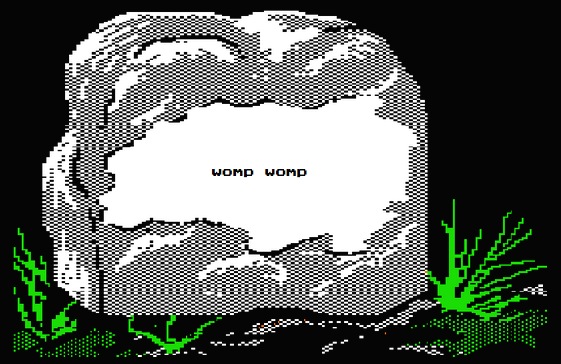
During the back half of the 2000s I worked for a small production company, making incidental music for TV shows, commercials, websites, etc. etc.
One of the funny things this job entailed was interpreting emails from advertising-side clients, who would often describe the music they were looking for in nebulous aesthetic prose. It wouldn’t be out of place to receive a request along the lines of “Fluffy cloud music,” or “The hardest music in the world. So hard it would make you pass out if it hit you.”
This could be frustrating, but it also allowed for a fair amount of flexibility. Different producers in our company might have different ideas about what sorts of instrumentation, tempo, or production styles might be suitable for “Fluffy cloud music” — and our variety of creative voices was an asset when we were squaring off against other production houses for jobs.
But there was one request which popped up so frequently that it became a kind of in-joke: “quirky music.”
Let’s take a step back for a moment and consider what “quirky” might mean in a musical context: A quirk is an unusual behavior or characteristic; so in a musical context, we might consider a quirk to be a writing or production element, or a creative decision which is unique to the creator or piece.
For example: a rap song where the vocalist inflects upward at the end of every phrase would be pretty quirky. How about a string octet featuring a vocalist doing brutal pig squeals? Or a bluegrass song whose lyrics are a fiery, long-winded rebuttal to Jane Jacobs’ seminal urban planning critique The Death And Life Of Great American Cities? As a producer, I tend to favor non-sine wave vibrato effects on lead instruments, which is slightly quirky, but also easy to miss if your ears aren’t accustomed to picking up this kind of technical detail.
Sadly, none of this is what the advertising folks meant when they requested “quirky music”– what they actually meant was “An upbeat, mid-tempo, major-mode song with ukuleles, hand claps, whistling, and glockenspiel.”
Exactly and only that.
Chances are, you will be able to instantly conjure this music in your mind’s ear; but if you need some help, well… here you go.
We’d get a “quirky music” request once or twice a month, and we’d dutifully tune up our ukes, dust off our glocks [ed:!!] and rip through a couple of these puppies in an afternoon. By the time I moved away and started my next gig, I must have produced dozens of these tracks — and I was only one of usually four or five producers demoing for these spots… and that was just from our production house.
Joining the ranks of “Literally” and “Inflammable,” these advertising folks had begun using “Quirky” to indicate it’s exact opposite: to ask for a specific, uniform, codified style of music — devoid of any identifiable quirks.
I bring this up to illustrate how variable communication about art can be among people with varying degrees of technical experience and from differing perspectives.
Enduring a full hour of Leonard Bernstein using Chomskian linguistic theory as a framework for formal analysis might, in reality, communicate less about a piece of music to the Average Joe than a cute cartoon which provides a helpful visual context for the emotional and narrative flow of the music. This is perhaps an apples-to-oranges comparison, but it highlights the delicate position in which an art writer finds herself.
Living in the context-focused postmodern age adds further wrinkles to this balancing act; wherein process, externalities, or other meta-considersations may supersede or even obviate discussion of the artifact itself. Or to put this in a less academic way: sometimes the fact that a legacy band got back together and made a new album is more important than what’s actually on that album.
On top of all this, workaday writers and editors must now contend with much more than simply writing to communicate their thoughts. As engagement analysis utilities begin to codify the diction and syntax used in online art writing, the tone and sentiment of language drift ever towards the repetitive, samey extremes encouraged by this practice — regardless of topic.
Lest I be unfairly characterized as keeping the dubious company of “Concerned Adults Everywhere,” nervously hand-wringing over a world careening down the wayward path of above-the-knee hemlines and that newfangled Rock And Roll Music– allow me to clarify my position:
As an artist, I have a vested interest in the way art is discussed and written about, and this is simply where I have most clearly observed certain detrimental shifts in writing tone and structure. I am critical of online art writing because I want it to be better. Not just in the odd corners of academic-leaning or technically-focused publications, but everywhere.
I face, perhaps, the uphill slope of the eternal optimist, but I will climb this slope with a jaunty whistle and a dopey smile.